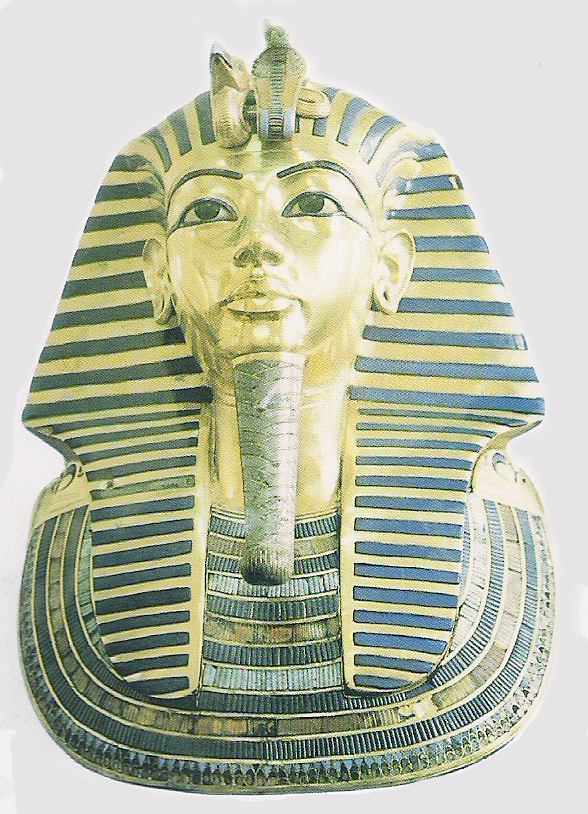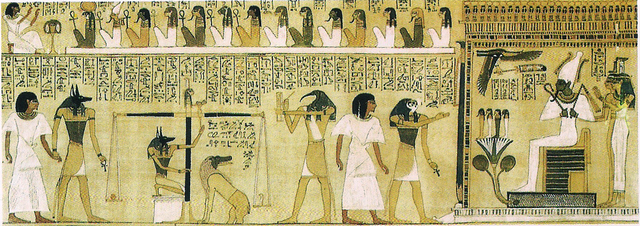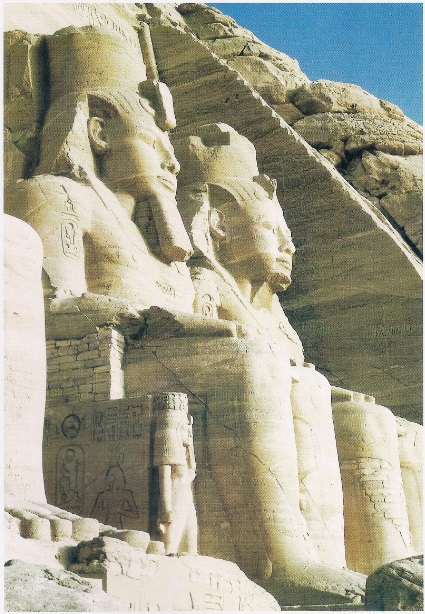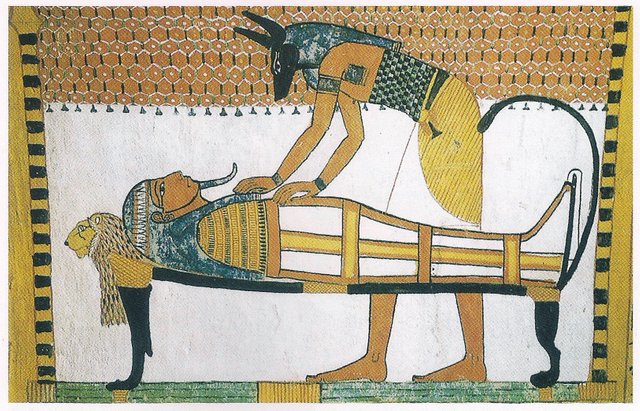Egyptian art to the order of the gods and pharaoh
The history of Egypt has bequeathed us a spectacular art that its inhabitants planned and executed to be eternal and whose insubstantial symbol could be exemplified in the pyramids, world-known tombs.
Said art, basically at the service of the sovereign - the pharaoh - and of the gods - the religion - had very varied forms within a monumental style, fascinating by its enormous personality, in which the religious, the magic and the funeral presided over any Creative manifestation.
This culture is divided into three main stages: Menfita, Tebana and Saita.

(Tutankhamun Funeral Mask)

(Detail of a papyrus on a scene of the Beyond, XIX dynasty, towards the 1300 a.c)
The temples
Were true houses of the gods, obeyed a very strict planning, around a longitudinal axis in whose development a long avenue of access was arranged, adorned with sphinxes or rams, obelisks and statues.
The tombs
The belief in a life in the Beyond, next to Osiris, of unlimited duration, for millions of years, gave rise to a funerary architecture that had to be subjected to these premises. So they originated different types of tombs among them the most outstanding were; Mastabas, pyramids, and hypogeums.
The palaces
Significant and true labyrinths of estancias of great ornamental richness, among which stood out the Hall of receptions and especially the window of the Apparitions, reserved so that the Pharaoh was made visible to his subjects on certain occasions
(Despite the care, almost all the Egyptian tombs were violated in ancient times)

(Colossal statues of Ramses II in the temple of Abu Simbel, XIX dynasty)

(The god Anubis cares for the mummy of Sennedjem, Deir el-Medina, nineteenth dynasty)
Materials and colors
Given the geological resources of Egypt, the sculptors worked all kinds of rocks and stones, from the hardest (basalt, diorite granite, porphyry) to the softer ones (limestone, gypsum, soapstone, serpentine).
They were also experts in wood carving, in which they obtained works of great quality. Also, they were excellent broncists and goldsmiths, although the works realized with metals, given the special value of the same ones.
In the field of painting and relief used as main colors (black, white, red, blue, and green) and also the secondary ones (ocher, yellow, gray) obtained from different mineral materials, applied on limestone walls And on a thick layer of mortar based on mud mixed with straw. Also painted on ceramics, wood and papyrus.
Bibliography:
Lo mejor del Arte egipcio 1 y 2, Federico Lara Peinado, Bloque Editorial de Armas, 1998.
We recommend to see as reference the following films: Sinuhe, the Egyptian, Cleopatra, Pharaoh, The Sphinx, The Dies Commandments and the video Egypt: in search of immortality.
Very Nice
Up-voted :-)
RightWithin